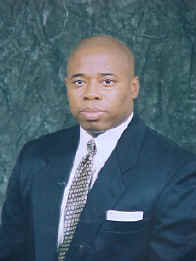
DUAL PATHS OF THE BULLET
As a child when my boyhood friends and I would
leave a Bruce Lee karate movie, we would all attempt to duplicate the actions
scenes that we had just viewed in the theater. This thought came to mind as I
played back the scene over and over in my head of the actor calmly walking up to
his victim and shooting him several times. As if the scene was not graphic
enough, he tripped and fell on top of an 11-year-old child as he was trying to
run from the gunman. While his bloody body lay on the child, the shooter walked
up to him and calmly shot him several more times before casually walking away.
Unfortunately this real life drama was not a theatrical performance played out
on the big screen. The actors were young men from the Fort Green section of
Brooklyn. Unlike my childhood reenactment of kung fu fighting, the victim in
this shooting will not be patched up and ready for next week's episode. He has
played his last role in our community's endless street violence. Far too often
these scenes are played out. Although the nation's police agency continues to
tell us how safe we have become, the reality is that violence is far too often a
part of the every day life of many New Yorkers.
After many years of viewing violence first hand, I am clear that public
officials respond differently to violent acts depending on the geographical
location of the act.
Many of us, who are called upon to address this problem in our nation, have long
understood that a bullet's destructive path takes two routes. In certain parts
of the city one such route is often misunderstood and ignored. While we readily
acknowledge how it rips into the human body and destroys those organs that give
life, we often fail to identify the path that it takes into the anatomy of our
community. Whereas the physical movement of bullet is frequently stopped after
it strikes an object in its flight path, the emotional projectile travels on. It
can continue in flight for several years after its initial departure from the
barrel of a gun.
The emotional impact exceeds the physical casualties. For the most part they are
more destructive because they often go undiagnosed and untreated.
Our failure to recognize both paths that a bullet takes, has led to our
inability to stop the emotional bullet's continuous travel. Communities outside
of those of color understand this clearly. That is why after there is a shooting
that takes place at a school our other sensitive location their neighborhood
support agencies takes the appropriate steps and immediately dispatch medical
attention to address the physical injuries. After the primary medical care is
taking care of, psychologist and other professional are sent to the location to
deal with the emotional trauma that follows. This is done as an attempt to stop
the bullet from continuing to rip into the vital organs of a community.
The end result is that the traumatizing is localized and the cancer of violence
does not have a chance to become a permanent sub culture in their community.
This is not the case in the communities of color across the nation.
Our systemic failure to address the dual path of a bullet and other violence
causes the stench of violence to pollute the air of our community. Unlike other
communities where the problem is neutralized, in the community of color it takes
root and grows. The evidence of how violence is nurtured in the community of
color can be viewed in the prison institutions. Entire industries thrive because
of violence in community of color. Manufactors of medical supplies make millions
from the emergency care supplies that fill the ER rooms of our nation's
hospitals. Car dealers can predict their annual sales projections based on how
well the drug trade is going to be in our community. Print shops have increased
their revenue input by making special rates for obituary programs. These are
only a few examples of how the institution of violence is supporting industries
outside the community of color.
The dual path of violence is not limited to corporate America our future is also
impacted. Evidence of this can be viewed in the behavior of our young. Their
music is not of love and joy but of death. We are repeatedly serenaded with
chart toping hits that sing about the lost of a love one or the taking of
someone's life.
I mention the dual path of a bullet and violence not to paint a picture of
despair but one of hope. In order to properly treat a problem one must correctly
identify it. As in all my articles I continually call on us to identify how we
can use our skills to stop the traveling path of the unseen emotional bullet.
Eric Adams
Co-Founder of 100 Blacks in Law Enforcement Who Care
9/27/04
To post your comments
on the discussion board click on the notepad. 
TOP
OF PAGE